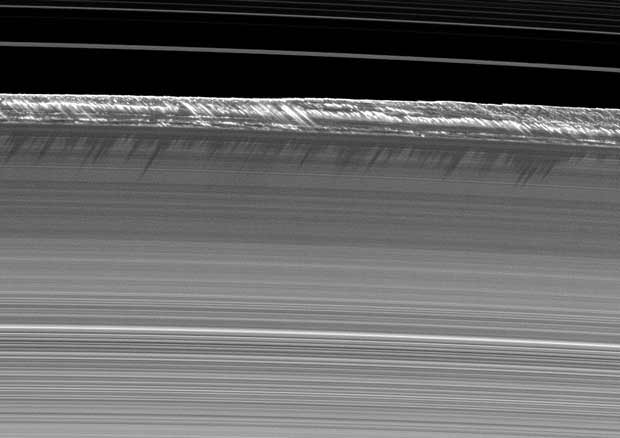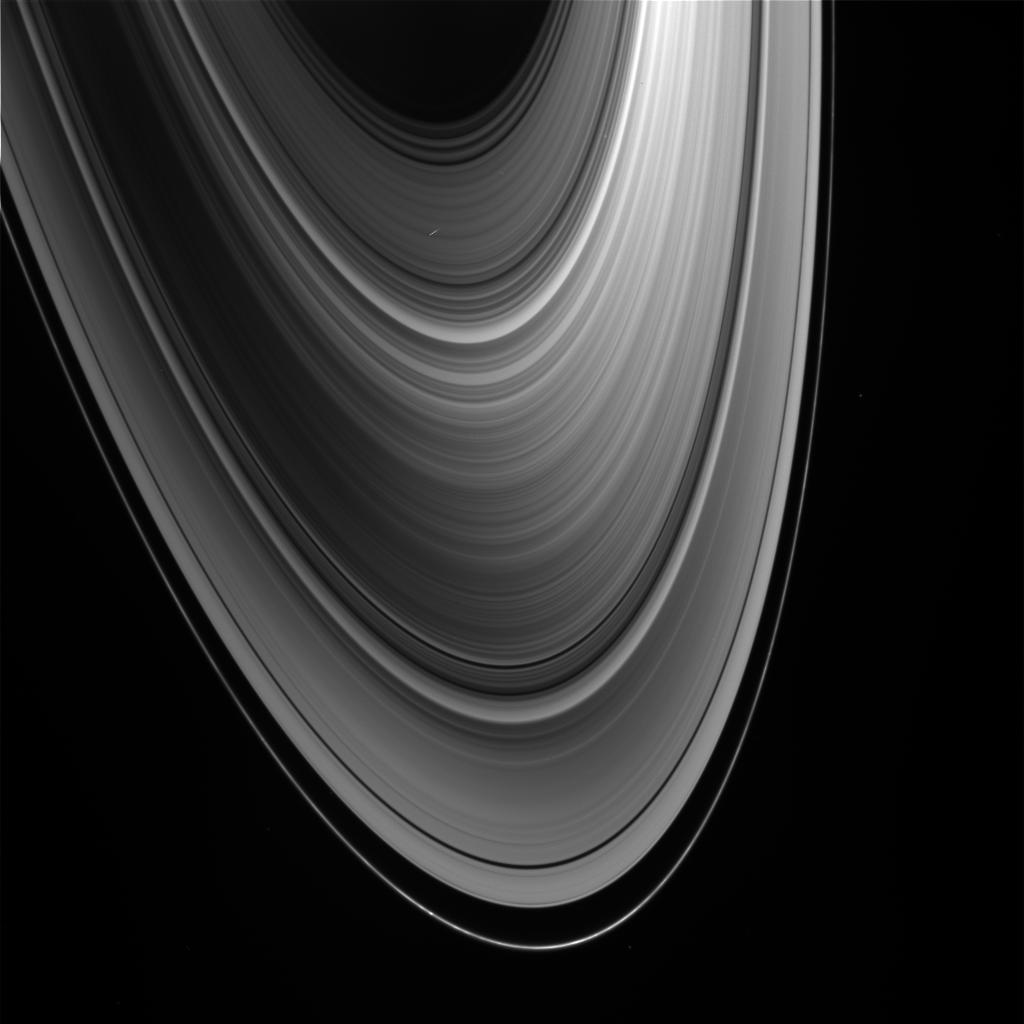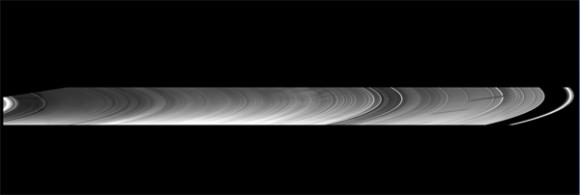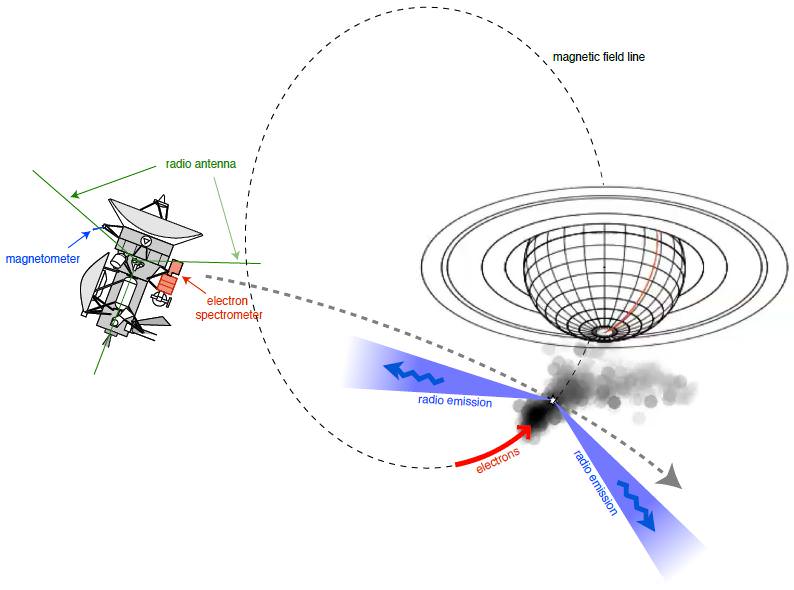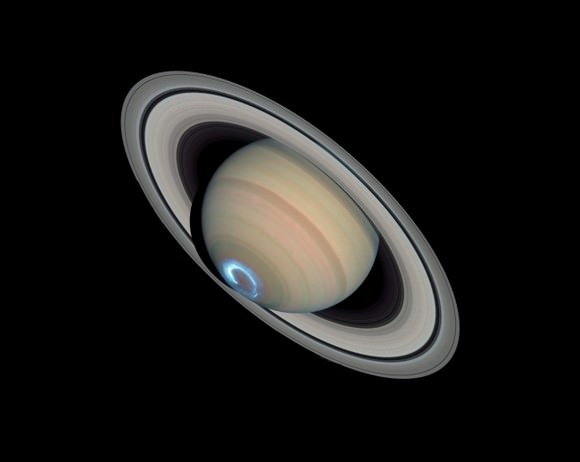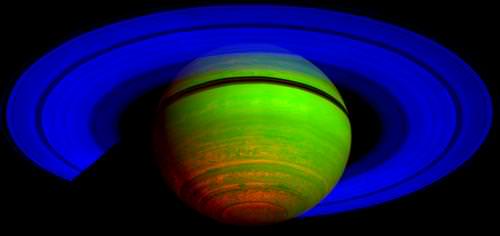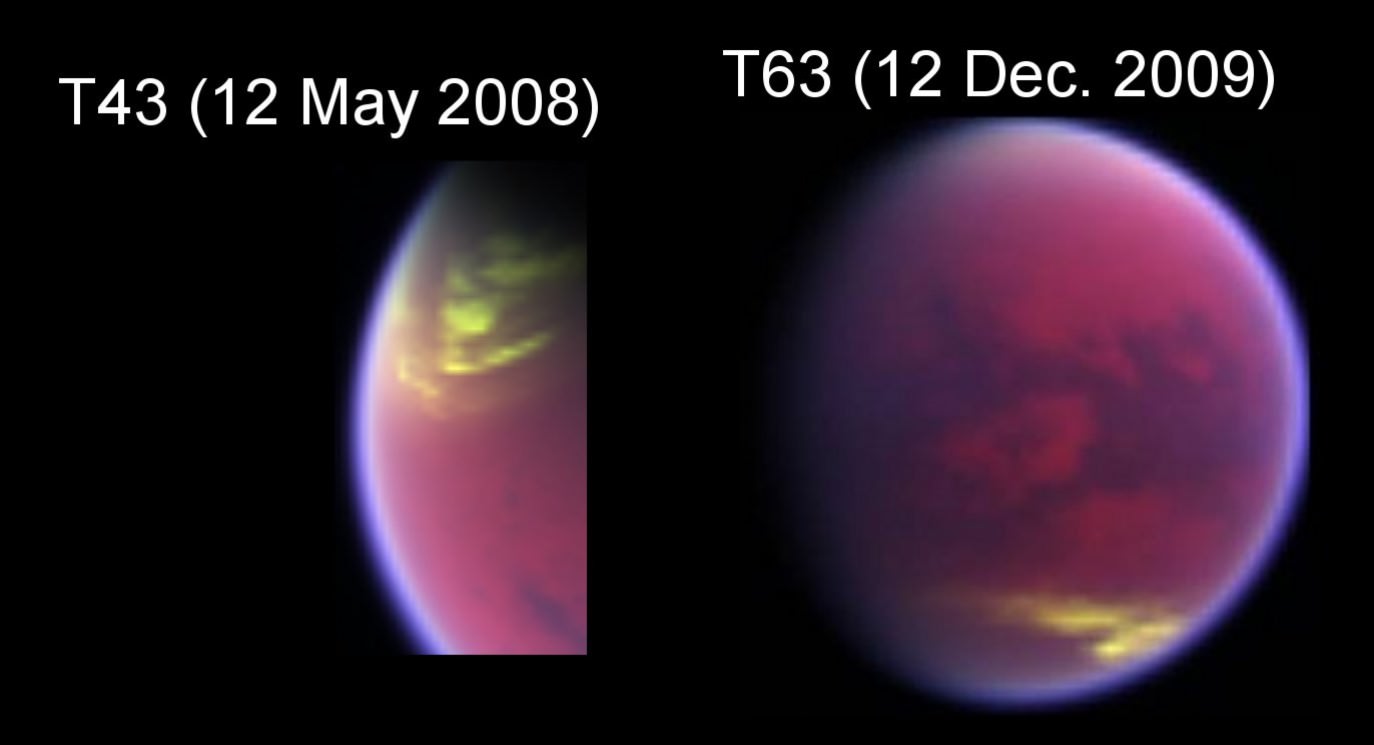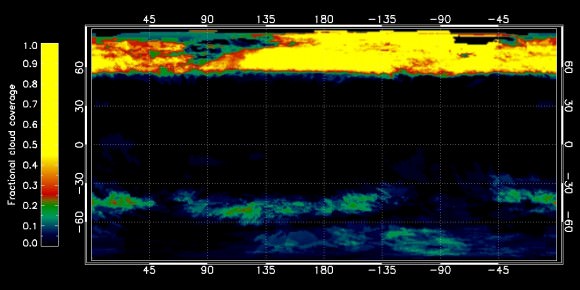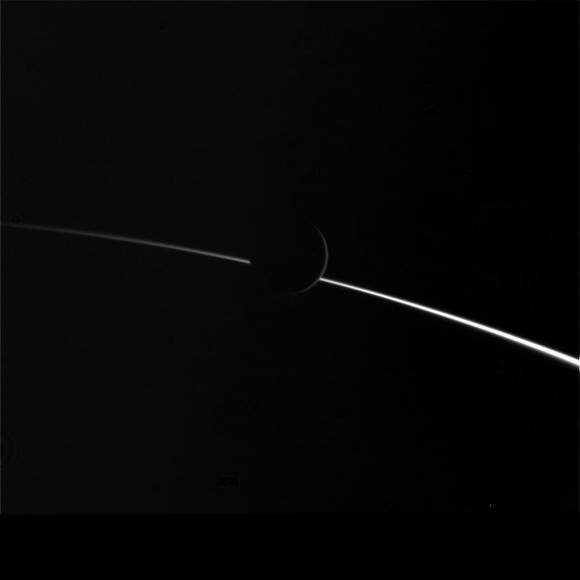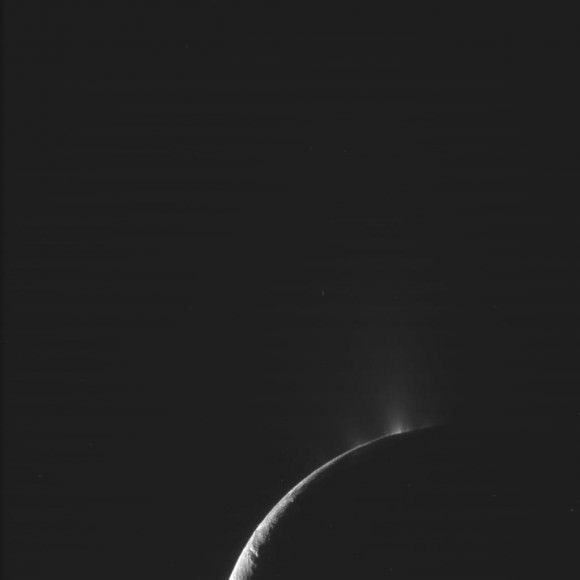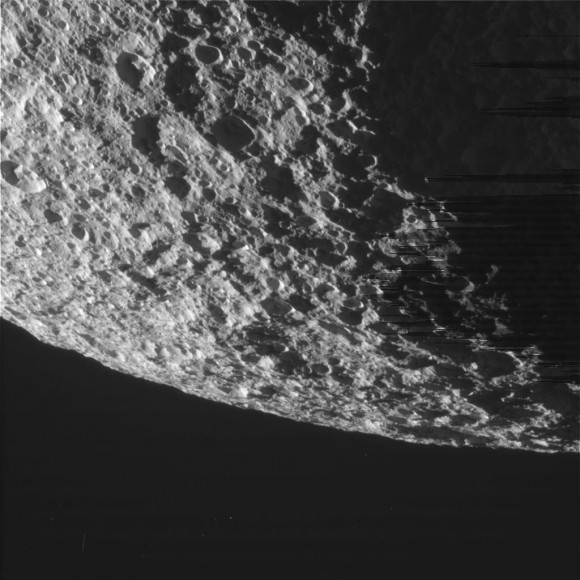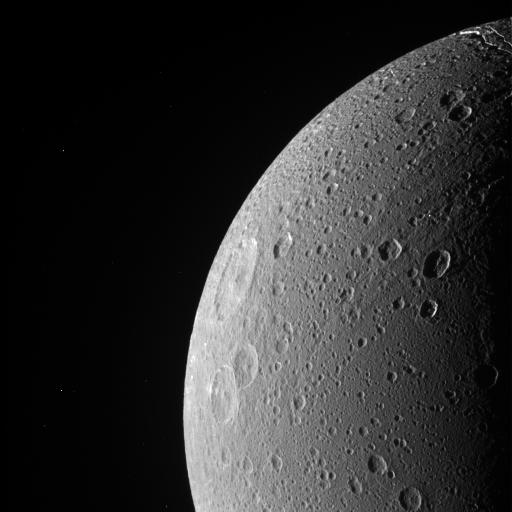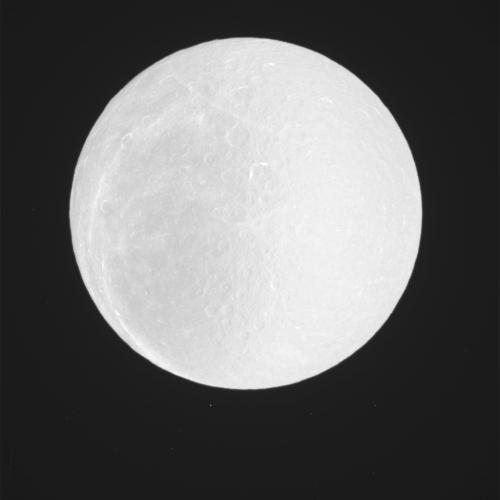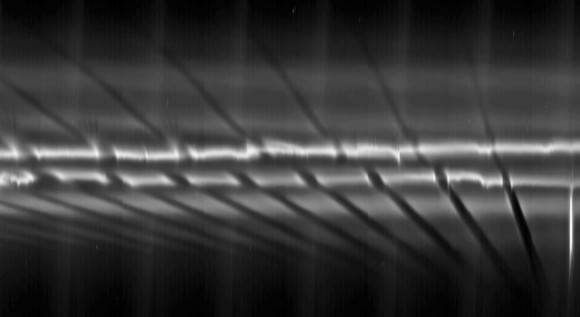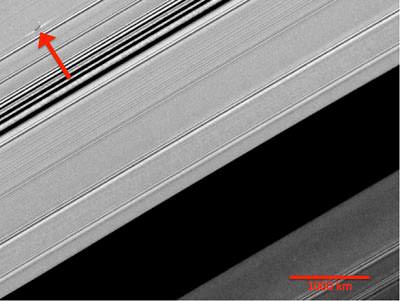It has long been known that Saturn’s rings are not the perfect hoops they appear as in small amateur telescopes, and when the Cassini spacecraft entered orbit around Saturn, the wonky disorder of the massive B ring became even more apparent. Scientists were stunned by towering vertical structures, scalloped edges on the rings, and odd propeller-like features. But scientists have now found the cause of these strange features: The region is acting just like a spiral galaxy, said Carolyn Porco, team lead of the Cassini imaging team.
“We have found what we hoped we’d find when we set out on this journey with Cassini nearly 13 years ago,” said Porco, “(and have gotten) visibility into the mechanisms that have sculpted not only Saturn’s rings, but celestial disks of a far grander scale, from solar systems, like our own, all the way to the giant spiral galaxies.”
The B ring is one of the most dynamic areas in Saturn’s rings, and surprisingly, scientists say, the rings are behaving like a miniature version of our own Milky Way galaxy.
When the the Voyager spacecraft flew by Saturn in 1980 and 1981, scientists saw that the outer edge of the planet’s B ring was shaped like a rotating, flattened football by the gravitational perturbations of Mimas. But it was clear, even in Voyager’s findings, that the outer B ring’s behavior was far more complex than anything Mimas alone might do.
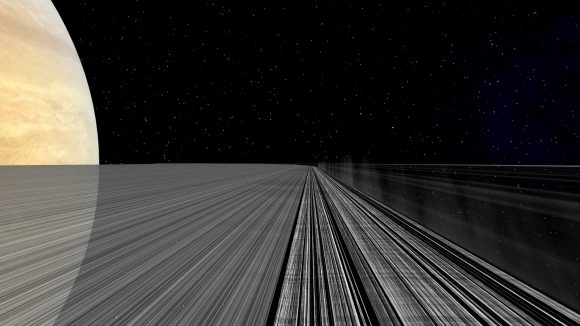
Through the analysis of thousands of Cassini images of the B ring taken over a four-year period, Porco and her team have found the source of most of the complexity: at least three additional, independently rotating wave patterns, or oscillations, that distort the B ring’s edge.
The oscillations travel around the ring with differing speeds and the small, random motions of the ring particles feed energy into a wave that propagates outward across the ring from an inner boundary, reflects off the outer edge of the B ring (which becomes distorted as a result), and then travels inward until it reflects off the inner boundary. This continuous back-and-forth reflection is necessary for these wave patterns to grow and become visible as distortions in the outer edge of the B ring.
Watch a video of the oscillations.
And see more “movies” at the CICLOPS website.
These oscillations, with one, two or three lobes, are not created by any moons. They have instead spontaneously arisen, in part because the ring is dense enough, and the B ring edge is sharp enough, for waves to grow on their own and then reflect at the edge.
The ring particles’ small, random motions feed energy into a wave and cause it to grow. The new results confirm a Voyager-era predication that this same process can explain all the puzzling chaotic waveforms found in Saturn’s densest rings, from tens of meters up to hundreds of kilometers wide.
“This process has already been verified to produce wave features in Saturn’s dense rings that are of small scale…about 150 meters or so,” Porco wrote in her “Captain’s Log” feature on the CICLOPS (Cassini imaging)website. “That it now also appears to produce waves of large, hundreds-of-kilometers scale in the outer B ring suggests that it can operate in dense rings on all spatial scales.”
“These oscillations exist for the same reason that guitar strings have natural modes of oscillation, which can be excited when plucked or otherwise disturbed,” said Joseph Spitale, Cassini imaging team associate and lead author of a new article in the Astronomical Journal, published today. “The ring, too, has its own natural oscillation frequencies, and that’s what we’re observing.”
Astronomers believe such “self-excited” oscillations exist in other disk systems, like spiral disk galaxies and proto-planetary disks found around nearby stars, but they have not been able to directly confirm their existence. The new observations confirm the first large-scale wave oscillations of this type in a broad disk of material anywhere in nature.
Self-excited waves on small, 100-meter (300-foot) scales have been previously observed by Cassini instruments in a few dense ring regions and have been attributed to a process called “viscous overstability.”
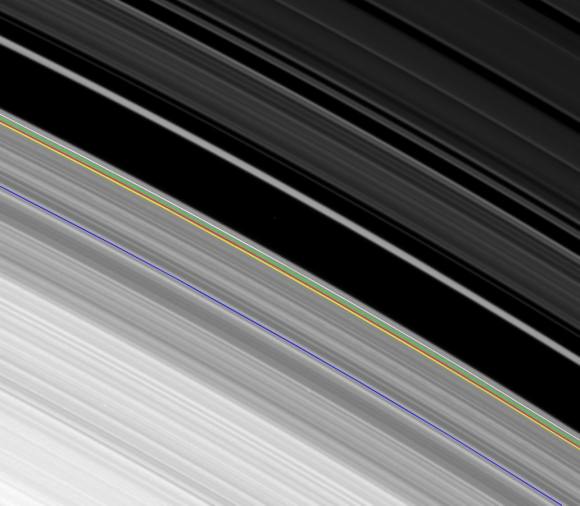
“Normally viscosity, or resistance to flow, damps waves — the way sound waves traveling through the air would die out,” said Peter Goldreich, a planetary ring theorist at the California Institute of Technology. “But the new findings show that, in the densest parts of Saturn’s rings, viscosity actually amplifies waves, explaining mysterious grooves first seen in images taken by the Voyager spacecraft.”
“How satisfying it is to find at last one explanation for most, if not all, of the chaotic looking structure we first saw in Saturn’s dense ring regions long ago with Voyager,” said Porco, “and have since seen in exquisite detail with Cassini.”

